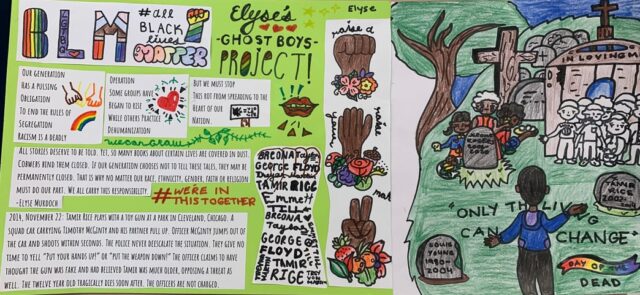Classrooms have long set the stage for social change by serving as spaces for the promotion and development of new ideas. Certainly teachers provide academic instruction, but more importantly, they play a pivotal role in helping students cultivate the skills they need to build a better society.
One of the best ways to help students mature into thoughtful, productive citizens is to address diversity and social justice in the classroom. An inclusive classroom environment helps students develop the problem-solving and social-emotional skills necessary to succeeding in their communities and beyond.
To design curricula that celebrate diversity, teachers need to reconsider traditional teaching tools and methods. This has proven especially challenging for some schools where the demand for culturally responsive curricula exceeds the resources available to create and implement them.
Here at Teaching Matters, we have developed a 4R Framework to guide us in supporting teachers and school leaders as they implement Culturally Responsive-Sustaining Education practices in the classroom. Anchored by the four guiding principles of rigor, relevance, relationship, and reflection, this framework outlines our core priorities in bringing diversity, inclusion, equity, and social justice to classrooms across the country. Our Elevating Voices program reflects our commitment to CR-SE, as it is designed to facilitate meaningful intercultural communication and help students extend what they learn in the ELA classroom to their local communities.
In this blog post, we will share strategies for incorporating topics of diversity and social justice into ELA classrooms and then introduce how Elevating Voices can best support you along the way.
Honoring Diversity with Learning Materials
Teachers must pay attention to the messages they convey with their classroom’s learning materials. Selected texts should recount events from multiple points of view rather than simply default to narratives of dominant culture. Incorporating texts with diverse perspectives will help teachers to reinforce ideals of tolerance and inclusivity.
Classroom materials should also be culturally relevant to best reflect and connect to the lived experience of learners. Allowing students to see themselves in what they’re learning fosters a sense of belonging and creates a classroom environment where all students feel valued and acknowledged.
Creating Opportunities for Intercultural Communication
Culturally responsive classroom materials can serve as a platform for students to learn from the diverse and varied experiences of their peers. Class discussion, group work, and other collaborative learning opportunities encourage learners to consider ideas and perspectives beyond those they’ve already formed. These forums present vital opportunities for learners to self-reflect, practice active listening, and build empathy for diverse experiences.
Class and group discussions provide excellent opportunities for students to recognize and discuss the impact of real-world issues on their everyday lives. Students should be taught to recognize and critically engage with relevant social justice issues such as cultural identity, LGBTQIA+ rights, racial discrimination, or gender equality.
Bridging the Gap Between the Classroom and Community
While discussing issues of diversity and social injustice is vital to culturally responsive learning, putting these discussions into practice is equally important. Social action performance-based projects are an excellent tool for taking classroom discussions out of the abstract and giving them real-world application. Through both long and short-term projects, students can participate and challenge social justice issues such as food deserts, environmental concerns, or the establishment of educational programs to provide accelerated learning before and after school that will strengthen their communities. Students may also take an advocacy-based approach by organizing social media campaigns, demonstrations, or focus groups to raise awareness around a particular issue.
Educators can structure these project-based tasks so that students are encouraged to express their learning in a variety of modalities beyond the traditional three paragraph essay. Students are positioned to successfully research, discuss, analyze data, write, create audio and video recordings, and use digital literacy to create podcasts, public service announcements, proposals for service or change, commercials, visual and/or photographic content.
